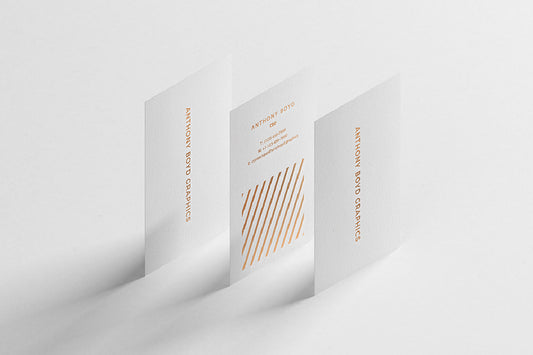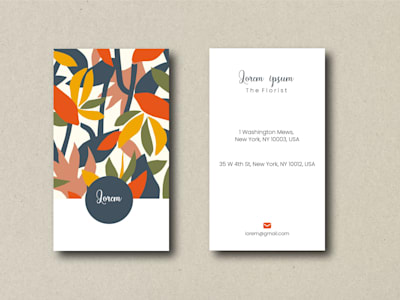Vertical vs Horizontal Business Cards: Which Works Better?

When it comes to business cards, the choice between vertical and horizontal orientation can significantly impact the impression you leave. Both styles have their unique advantages and can be suited to different branding strategies, industries, and personal preferences. This article explores the differences, benefits, and considerations to help you decide which format works best for your business needs.
Understanding Business Card Orientations
Vertical Business Cards
Vertical business cards are taller than they are wide, resembling a mini poster or flyer. This orientation is less traditional and can make your card stand out in a stack.
Advantages:
- Unique and modern appearance
- Easier to incorporate creative designs and layouts
- Can emphasize vertical elements like logos or taglines
Considerations:
- May not fit standard cardholders or wallets
- Some recipients might find them unconventional
Horizontal Business Cards
Horizontal business cards are the classic, landscape-oriented cards that most people are familiar with.
Advantages:
- Fits standard cardholders and wallets
- Familiar and widely accepted format
- Easier to read left to right, aligning with natural reading patterns
Considerations:
- Can be seen as less distinctive
- Limited space for creative vertical design elements
Comparison Table: Vertical vs Horizontal Business Cards
| Feature | Vertical Business Cards | Horizontal Business Cards |
|---|---|---|
| Orientation | Portrait (taller than wide) | Landscape (wider than tall) |
| Design Flexibility | High – allows creative layouts | Moderate – traditional layouts |
| Wallet Compatibility | May not fit all standard holders | Fits most standard holders |
| Readability | Can be less intuitive for some readers | Generally easy and familiar |
| Brand Impression | Modern, innovative | Classic, professional |
When to Choose Vertical Business Cards
- If your brand identity is modern, creative, or unconventional
- When you want to stand out in networking events
- If your design includes vertical elements like tall logos or taglines
When to Choose Horizontal Business Cards
- If you prefer a traditional and professional look
- When compatibility with standard cardholders is important
- If your design relies on horizontal text and images
Tips for Designing Effective Business Cards
- Keep contact information clear and legible
- Use high-quality materials and printing techniques
- Incorporate your brand colors and fonts consistently
- Consider adding QR codes for digital engagement
- Balance creativity with professionalism
Frequently Asked Questions (FAQ)
Q1: Can I mix vertical and horizontal cards in my business?
A: While possible, it’s best to maintain consistency to reinforce brand identity.
Q2: Are vertical business cards more expensive to print?
A: Printing costs are generally similar, but custom sizes or special finishes may affect the price.
Q3: Do vertical cards fit in standard wallets?
A: Many vertical cards are slightly taller and may not fit all wallets, so consider your audience.
Q4: Which orientation is better for digital business cards?
A: Digital cards can be designed in any orientation, but horizontal layouts often display better on screens.
Choosing between vertical and horizontal business cards depends on your brand personality, practical needs, and the impression you want to make. By understanding the strengths and limitations of each, you can create a card that effectively represents your business and leaves a lasting impact.
